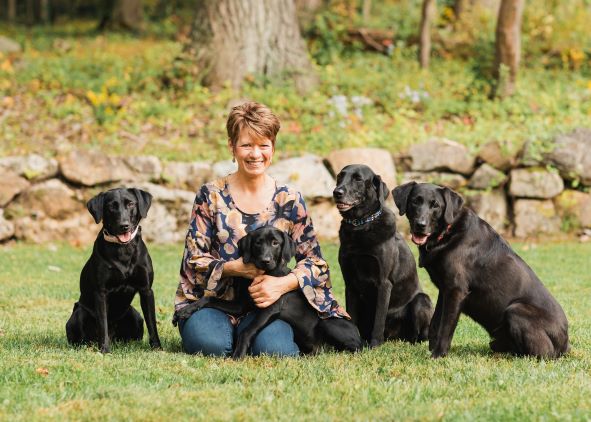Course Details
Dog training is like balancing on a tightrope. We want our dogs to be happy, engaged and motivated. Yet we also need precision which often leads to a loss of enthusiasm. It’s a delicate dance. Once dogs have learned the exercises it becomes a challenge to maintain them. Dogs get bored, they lose enthusiasm and the exercises degrade. In this class we will look at a variety of strategies and games to maintain motivation for all exercises. You will learn how to get precision without losing animation. We will look at using aides to help achieve balance and, more importantly, how to fade them. You will learn how to break exercises down to keep the pieces fun and exciting without losing accuracy. You will learn how to use backchaining, jackpot training and how to handle anticipation. You will also learn how to balance your dog’s arousal to ensure they are in an optimal state to perform at a high level. Whether you are starting to put the pieces together or your dog is competing, this course will help you maintain enthusiasm without losing precision.
Teaching Approach:
This class will have written and video lectures each week. Each lecture will be broken down into small pieces. There will be video examples with instructions demonstrating all exercises. Because everyone has their own learning style, I encourage students to move at their own pace. Students will need room for dogs to run to encourage speed with certain exercises (for example, Recall, Retrieves). Students will need to move around with their dog. However, I am happy to work with you to modify the training to your abilities. A few of the games will require quick physical movement from the trainer for short periods and distances. I understand that each dog and handler are unique and will do my best to accommodate their needs.
 Instructor: Petra Ford
Instructor: Petra FordI have been training and competing for several decades in a variety of sports including Hunt Tests, Field Trials, Nosework, Agility and Rally. My first love has always been competition obedience. I have been fortunate to win the AKC National Obedience Championship four times with three different dogs. (Click here for full bio and to view Petra's upcoming courses)


